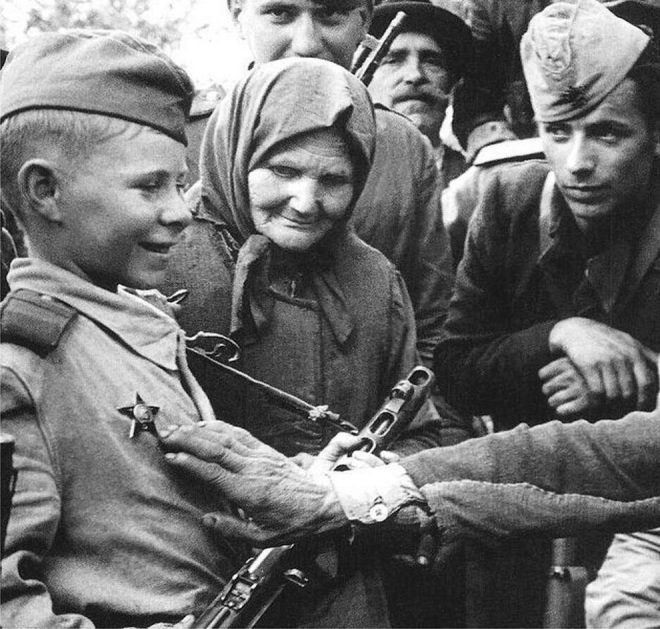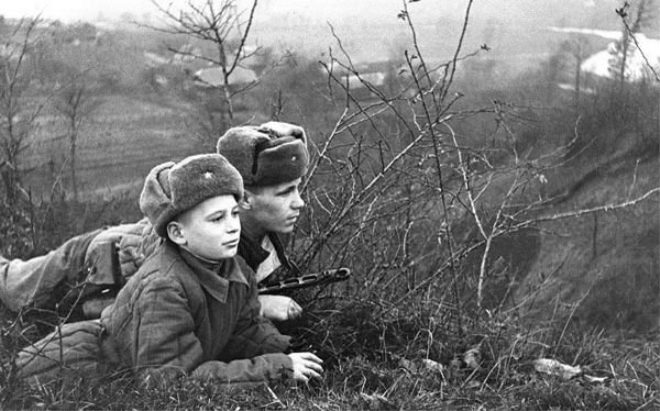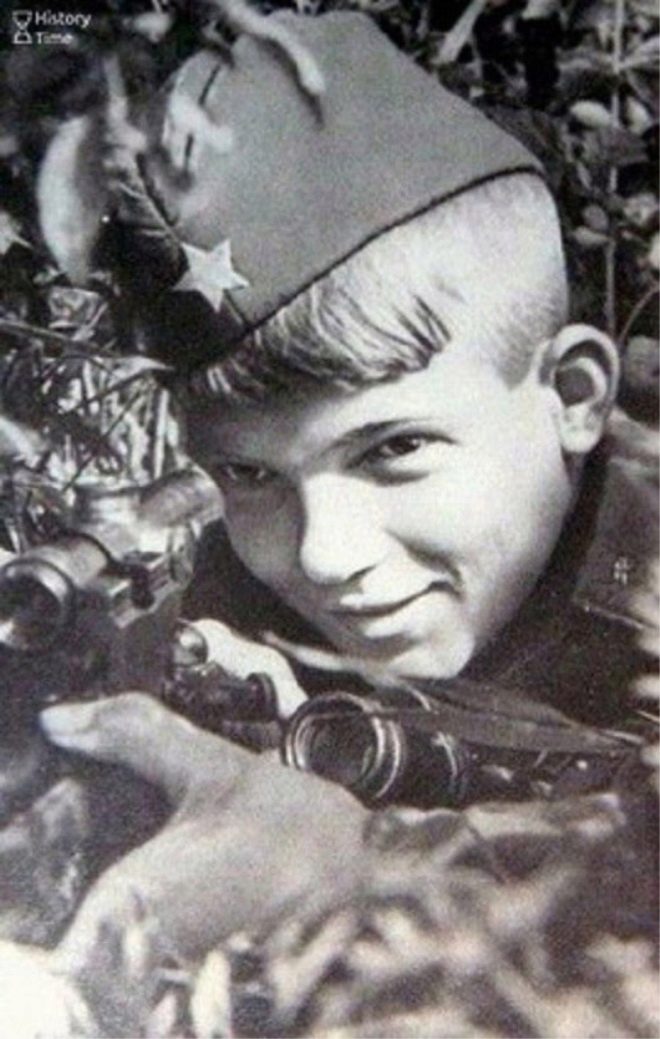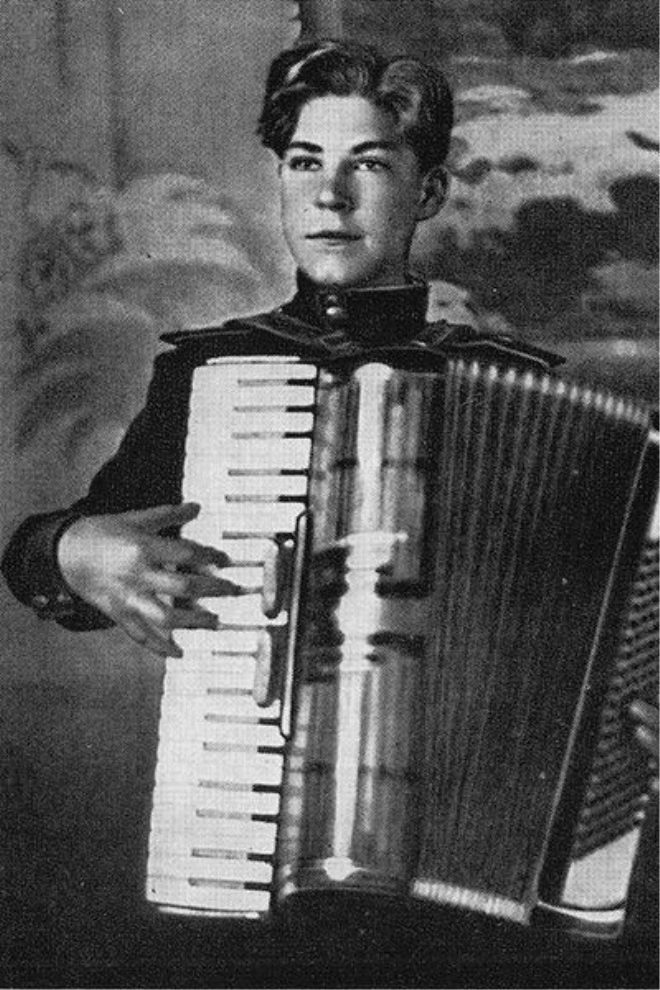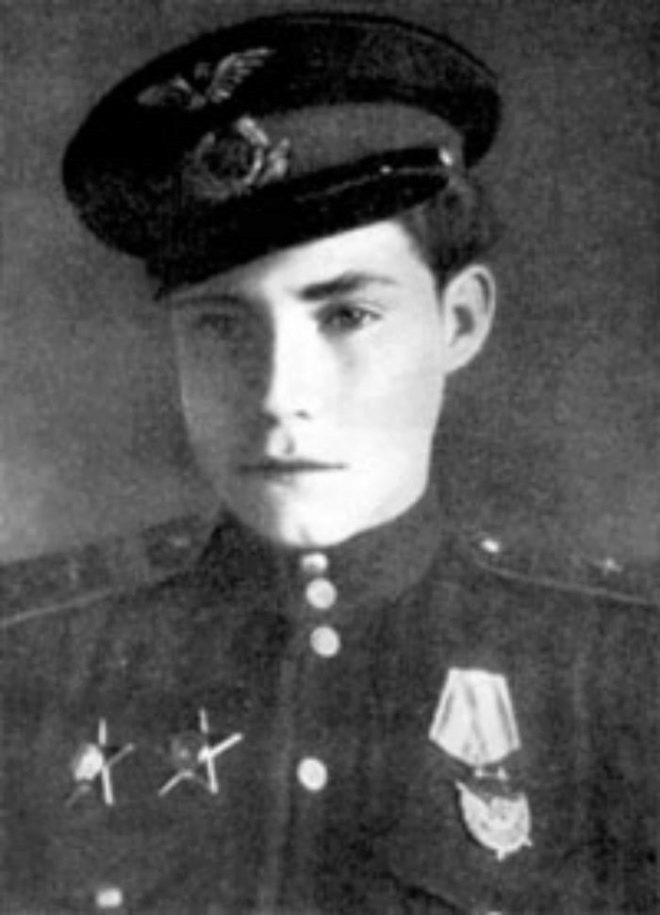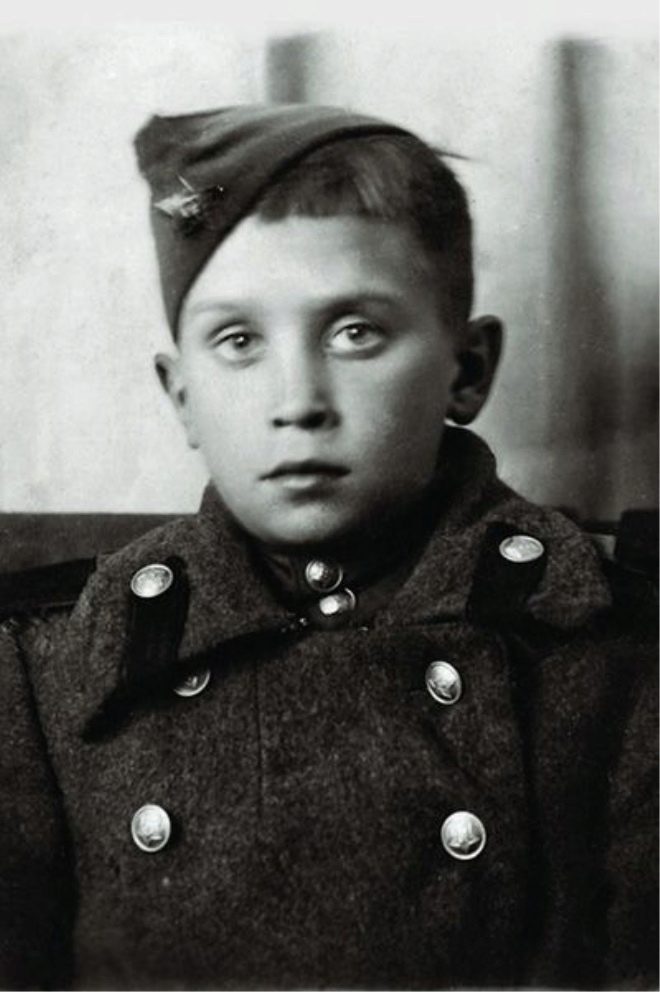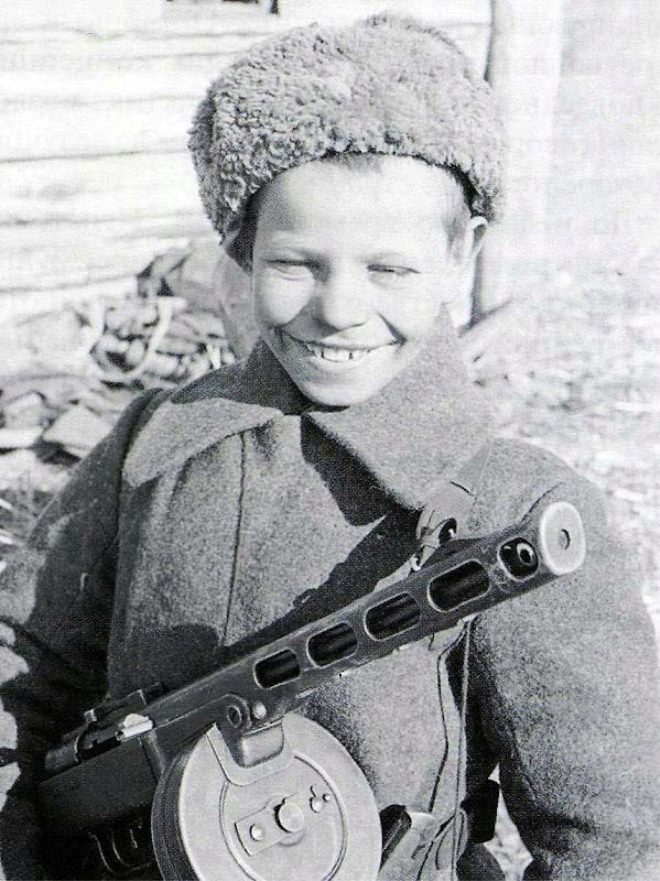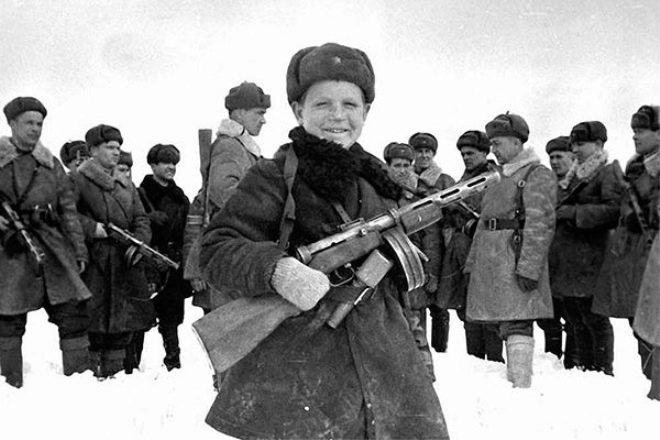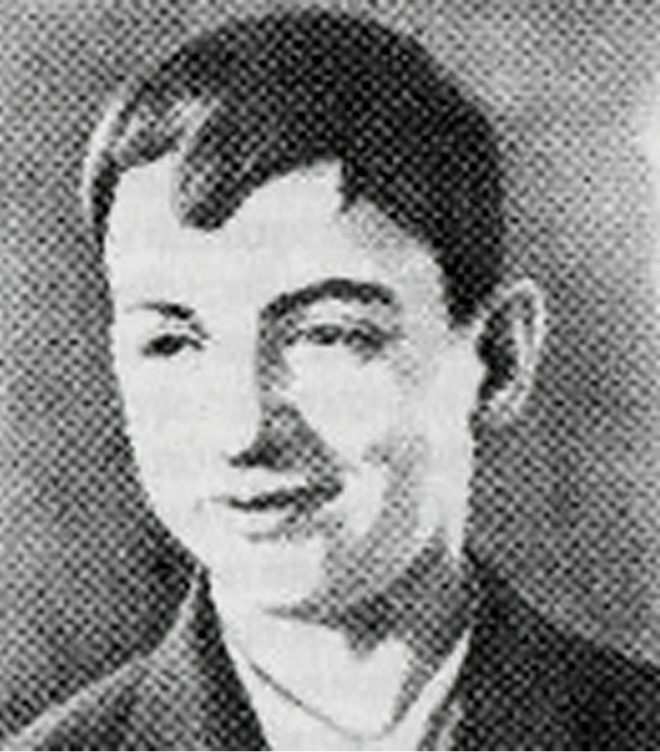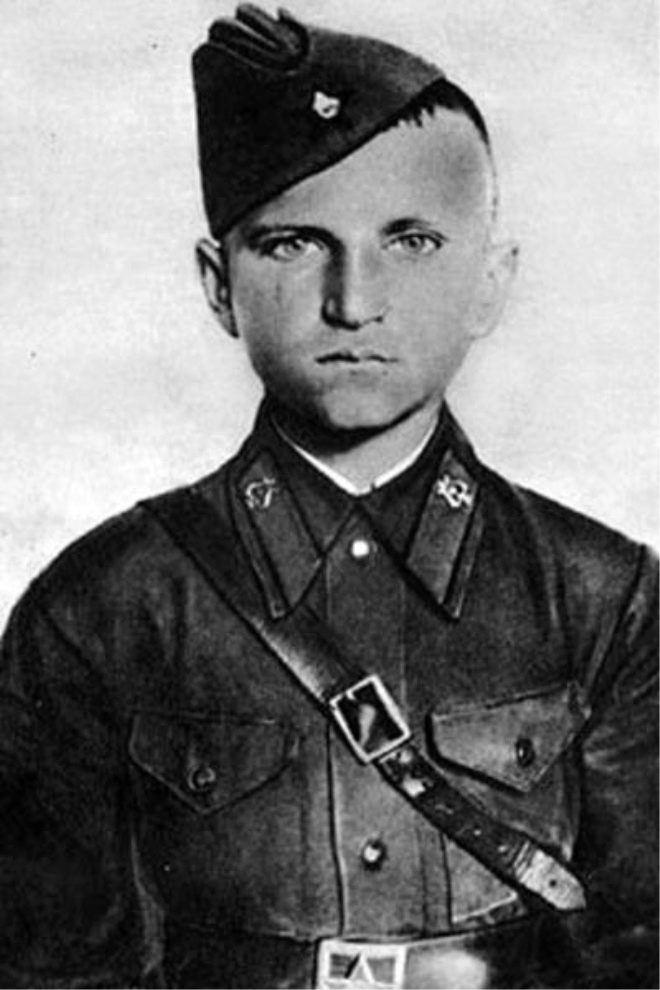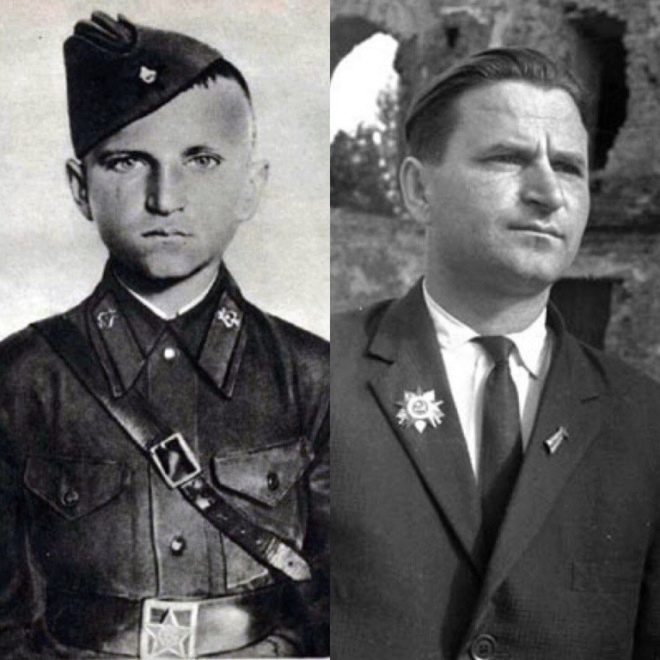The fate of the little heroes: how the children fought on the fronts of World War II
The Ministry of Defense of the Russian Federation continues to declassify documents about the fighters and commanders of the Soviet army. And increasingly they are found data about children.
There were significantly more children and adolescents at the front than we used to believe.
And the point is not that someone did not calculate them in due time, but that the commanders deliberately overestimated age "regiment favorites" to avoid administrative punishment for violation of conscription rules.
In the award documents, the little ger who were only 10, 12, 14 years old indicated the age, exceeding real by several years.
The exact age of the winners became known after the war. What were the little heroes of the great Victory?
- Vasya Kurka, sniper, 15 years
Vasya is not yet sixteen when the war began. Like many peers, he added himself a couple of years in documents, rubbed and corrected numbers, and was mobilized.
An experienced commander of the 726 rifle regiment immediately realized that in front of him is a child. The boy tearfully begged him to leave, not to send home. The commander decided that the guy can be used in the protection of the wagon train with food and ammunition for soldiers.
Every day Vasya went to the commander and insistently asked for the front line. And at some point an adult man could not stand it and allowed him to join the team of snipers on an equal footing.
On the account of the boy about 200 destroyed German soldiers and officers. He rose to lieutenant and became commander of a rifle unit.
Until May 45th he did not live exactly five months. In January 1945, he was mortally wounded near the Sandomierz bridgehead.
- Arkasha Kamanin, pilot, 15 years
Unlike many children who went to the front, Arkady didn’t add himself to age, he came to the front with his father, who was appointed commander of the 5th Guards Ground Attack Aviation Corps. The boy was assigned the role of aircraft mechanic.
At first, the fighters avoided the son of the general, but then realized that behind the father's name the guy is not hidingworks in full force and constantly asks to the sky.
One of the pilots ventured to take the teenager with him as a navigator on the U-2, and soon Arkady began to fly independently. By May 45, the pilot Kamanin became a foreman, flew 300 hours and honestly deserved three combat awards.
In 1946, the boy entered the Zhukovsky Academy, was quick to enter the cosmonaut corps, but in 1947, he died from meningitis that suddenly hit him.
- Yura Zhdanko, scout 10 years
Ten-year-old Yura at the front was by chance. In the summer of 41, I went to show secret paths to retreating Red Army soldiers and could not return home - the Germans occupied Vitebsk.
In 42, the boy helps a group of partisans to break through the encirclement; in 43, he participates in undermining the bridge across the Berezina.
In 1944, the boy was 13 years old, and he already had such awards on his chest: Order of the Red Star and the Medal "For Courage".
Yury was seriously wounded by shell fragments. after treatment at the hospital he tried to enroll in the Suvorov School, but was screened out for health.
Then the teenager chose a more peaceful profession - he became a welder.
- Tolya Komar, infantryman, scout, 15 years
The teenager had a chance to show the way to the advancing Soviet troops in the fall of 43 years under Slavyansk.
No one remembers how and why, but the child stayed with the fighters and soon he was given a weapon and enrolled as a private. Tolya went into reconnaissance, took part in operations behind enemy lines during the liberation of Ukraine.
His war lasted only two months.
During the operation, in the enemy's rear, the boy was forced to close the body of retreating comrades, literally leaning on the muzzle of an enemy machine gun.This gave the necessary time for a breakthrough to elder comrades.
The name of Kohl Mosquito, his adult colleagues, with whom he saved lives, was written in May 45 on the walls of Reichstag, so that it never sunk into oblivion.
- Petya Klypa, military musician, 15 years old
Peter was a pupil of a musical platoon based in the Brest Fortress.
All of his minor comrades managed to leave the attacked fortress, but Petya refused outright refused, standing in one line with the defenders. He became actually the very first Soviet childwho fought in this war on par with adults.
Together with the remnants of the regiment, the boy set off towards Brest by order of the command, but was captured.
From German captivity the young musician managed to escape. The boy struggled to catch up with his, who were retreating. He did not succeed, the child was seized by the police and sent to Germany for work.
The young defender of the Brest Fortress was freed in 45. He passed the special services check and was allowed to continue his service in the army.
The fate of this child was difficult - he was in prison for the sale of stolen goods.
After his release he helped historian and writer Sergei Smirnov. to recreate the events of the defense of the Brest fortress, taking an active part in creating the book.
Eternal memory to all the heroes of the Great Patriotic War! Eternal glory to all the children who helped bring peace back ...
